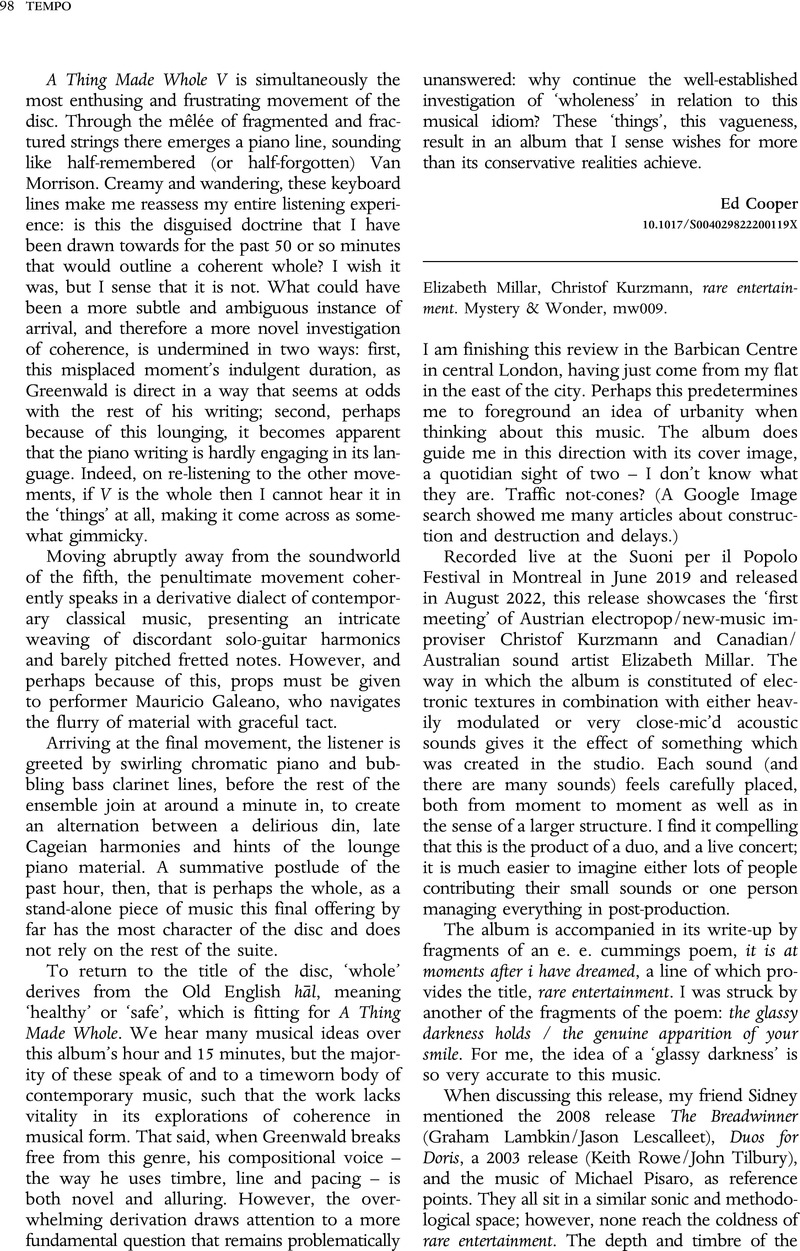No CrossRef data available.
Published online by Cambridge University Press: 03 April 2023

1 Schafer, R. Murray, The Soundscape: Our Sonic Environment and the Tuning of the World (Simon and Schuster, 1977)Google Scholar.
2 Feld, Steve, , ‘Acoustemology’, in Keywords in Sound, eds Novak, David and Sakakeeny, Matt (Durham: Duke University Press, 2015), pp. 12–21CrossRefGoogle Scholar.
3 Jacobs., Jane, The Death and Life of Great American Cities (New York: Random House, 1961)Google Scholar.
4 Boyer, Anne, ‘Erotology’, in A Handbook of Disappointed Fate (Brooklyn: Ugly Duckling Presse, 2018), pp. 82–85Google Scholar.